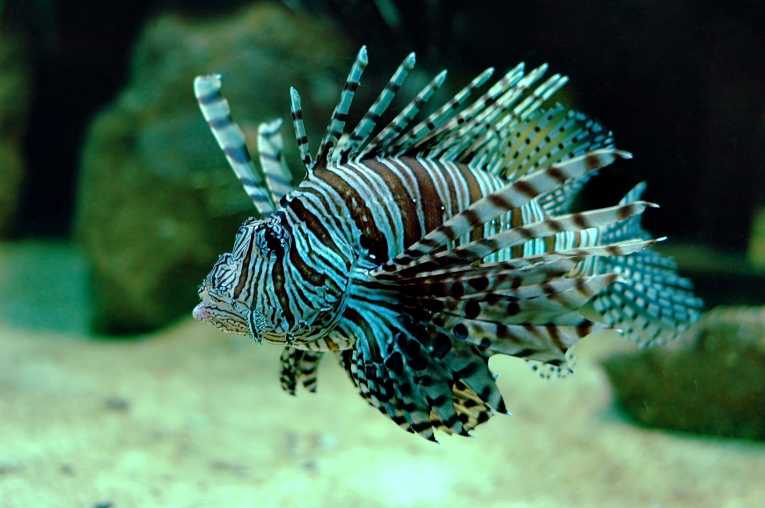The devices, which are not actual harpoons, have been specially developed to enable divers to capture the highly poisonous lion fish from a safe distance. It consists of three retractable prongs which shoot out along the base rod. On Curacao a group of around 30 volunteers will be trained to capture Lion Fish.
Dive school operator Patrick Geers, who was one of the dive school owners that took the initiative to approach Minister of Health and Environment Jacinta Constancia, says: "The Minister has to change the law to enable this. .. The volunteers will have to be trained in the responsible use of this device and will be issued a special permit."
The spectacularly colored Red Lionfish are native to the Pacific Ocean. It is popularly thought that the invasion is based on 3 to 6 individuals who escaped from a beachside aquarium during Hurricane Andrew in Biscayne Bay in 1992 in Florida. In the Atlantic, they have no natural enemies.The lionfish has two scary properties:
One is its alarming rate of reproduction. They can reproduce year-round and females can produce up to several thousand egg sacs a week. Since the first official sighting in North Carolina in 2000 the lionfish have spread at least as far south as the Dutch Caribbean off the coast of Venezuela.
The second and most alarming is its ferocious appetite. A single lionfish can reduce the juvenile reef fish population by 79% in 5 weeks, research by the Oregon State University in the Bahamas has showed. They eat fish up to 2/3 their own size. Dissection has shown they eat almost any juvenile fish, shrimp or other species.
Dive school owner Geers: "We have observed them lying in wait for juvenile fish. If the fish do not approach, they will chew up a bit of fish and spit it out to lure them." On Bonaire 6 lionfish have been observed trying to get at a Queen conch.
Lionfish could potentially wreak total havoc on the Caribbean's fishing and tourism industry. Hopefully the ELFS will provide a solution.










